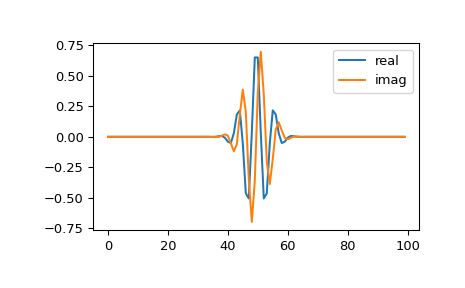scipy.signal.morlet#
- scipy.signal.morlet(M, w=5.0, s=1.0, complete=True)[source]#
Complex Morlet wavelet.
Deprecated since version 1.12.0: scipy.signal.morlet is deprecated in SciPy 1.12 and will be removed in SciPy 1.15. We recommend using PyWavelets instead.
- Parameters:
- Mint
Length of the wavelet.
- wfloat, optional
Omega0. Default is 5
- sfloat, optional
Scaling factor, windowed from
-s*2*pito+s*2*pi. Default is 1.- completebool, optional
Whether to use the complete or the standard version.
- Returns:
- morlet(M,) ndarray
See also
morlet2Implementation of Morlet wavelet, compatible with
cwt.scipy.signal.gausspulse
Notes
The standard version:
pi**-0.25 * exp(1j*w*x) * exp(-0.5*(x**2))
This commonly used wavelet is often referred to simply as the Morlet wavelet. Note that this simplified version can cause admissibility problems at low values of w.
The complete version:
pi**-0.25 * (exp(1j*w*x) - exp(-0.5*(w**2))) * exp(-0.5*(x**2))
This version has a correction term to improve admissibility. For w greater than 5, the correction term is negligible.
Note that the energy of the return wavelet is not normalised according to s.
The fundamental frequency of this wavelet in Hz is given by
f = 2*s*w*r / Mwhere r is the sampling rate.Note: This function was created before
cwtand is not compatible with it.Examples
>>> from scipy import signal >>> import matplotlib.pyplot as plt
>>> M = 100 >>> s = 4.0 >>> w = 2.0 >>> wavelet = signal.morlet(M, s, w) >>> plt.plot(wavelet.real, label="real") >>> plt.plot(wavelet.imag, label="imag") >>> plt.legend() >>> plt.show()
